Bromate is a carcinogenic disinfection byproduct that’s formed when ozone (a chemical disinfectant) reacts with bromide (a naturally occurring impurity) in water.
In this guide, we’ve shared the 4 best methods to remove bromate from drinking water in your home.
📌 Key Takeaways:
- Bromate is a disinfection byproduct that’s found in ozone-disinfected water supplies with a high bromide ion concentration.
- Ingesting bromate in your drinking water over long periods increases your risk of cancer.
- The best ways to remove bromate from drinking water are with reverse osmosis systems, ultrafiltration, granular activated carbon filtration, and anion exchange.
Table of Contents
🤔 What Is Bromate & Where Does It Come From?
Bromate is one of the many disinfection byproducts that are produced when water is treated with disinfection chemicals. These unwanted substances have a number of known health risks, including cancer.
Specifically, bromate is formed when water is treated with ozone, calcium hypochlorite, or sodium hypochlorite solution. Ozone is the most common of these chemicals used for drinking water disinfection.
Bromate is formed when ozone added to the water reacts with bromine naturally existing in the source water. Most surface water supplies contain bromine.
It’s difficult to prevent bromate’s presence in the feed water altogether, which is why this byproduct is found in so many water supplies that use ozonation as a water treatment method.
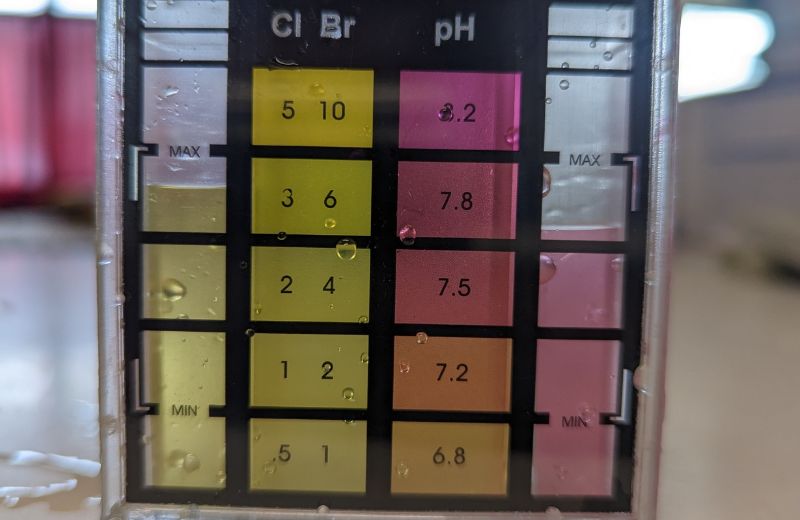
🩺 Potential Health Effects of Bromate
Bromate in water has a number of possible health complications. These include:
- Cancer
- Hearing loss
- Nausea and vomiting
- Diarrhea
- Abdominal pain
- Central nervous system effects
- Kidney failure
The health effects of bromate depend on the amount of bromate ingested and for how long. Consuming low levels of bromate over long periods may increase your cancer risk, while ingesting large amounts of bromate at once could lead to bromate poisoning.
👨🔧 You can learn more about bromate, how it’s formed, and its potential health complications in our guide to bromate in drinking water.
🧪 How To Test For Bromate In Water
You can test for bromate in water by sending off a water sample to your preferred certified water testing laboratory.
The cost of a laboratory test for bromide and bromate is $150-$200 on average.
To test your water for bromate using a laboratory test, follow these steps:
- Order your preferred lab test and wait for it to arrive in the post.
- Follow the instructions to take a sample of your tap water and mail it back to the laboratory.
- Wait for your results to come through. This usually takes up to 14 days.
- Analyze your results and decide how you plan to treat your water, if necessary.
💡 If more than .010 of bromate (the EPA MCL for this contaminant) is detected, you’re at a greater risk of experiencing the health effects of this disinfection byproduct, including cancer.
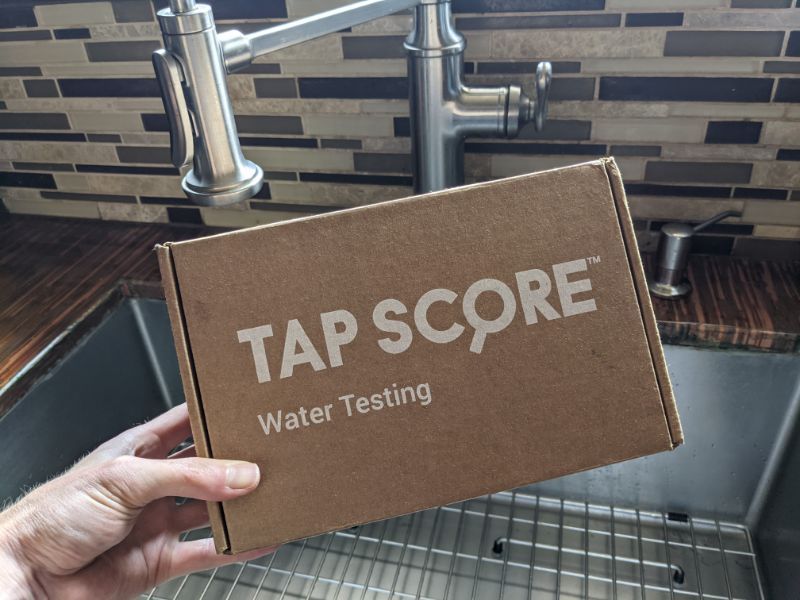
✅ How to Remove Bromate from Drinking Water
So, how do you treat contaminated water and greatly reduce bromate in your drinking water?
We’ve shared the four most useful water treatment solutions for bromate reduction below.
Granular Activated Carbon Filters
✅ Bromate reduction percentage: >73.2%
Granular activated carbon filtration is one of the most effective and affordable methods of reducing bromate in drinking water.
A study into the effectiveness of GAC for reducing bromate found that these filters can reduce at least 73.2% of bromate in drinking water, and at least 38.5% of bromide. Plus, granular activated carbon filters remove around 82% of ozone, reducing the likelihood of further bromate formation.
You can choose the right activated carbon filtration solution for you, as there are numerous filter options, including drinking water pitchers, POU under-sink filtration systems, countertop filters, whole-home filters, and more.
As well as reducing bromate, GAC filters are also capable of removing harmful contaminants found in normal drinking water supplies, including chemicals affecting water’s taste and odor, hydrogen sulfide, and other disinfection by-products.
Pros of GAC filter for bromate removal:
- It’s one of the most affordable solutions.
- There are numerous types of filters you can choose between.
- There’s only a single filter to change.
Cons of GAC filter for bromate removal:
- The filter media may become quickly saturated and require frequent replacements.
- GAC doesn’t have the highest potential bromate reduction percentage on this list.
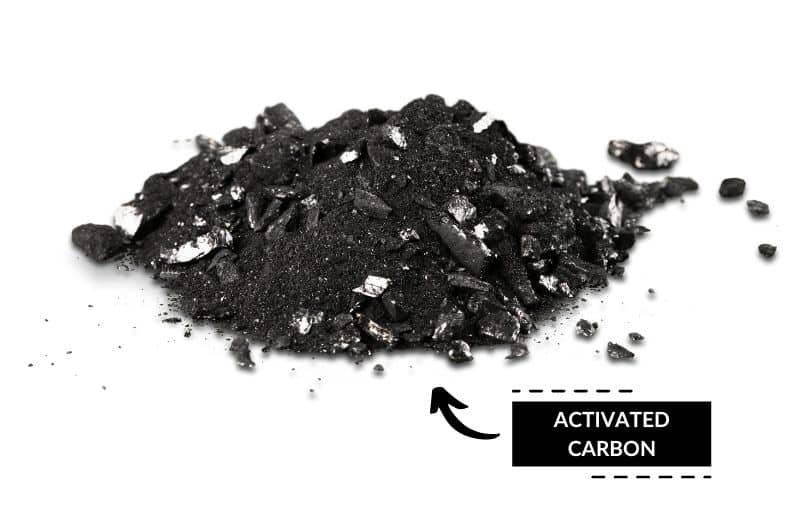
Reverse Osmosis Systems
✅ Bromate reduction percentage: >96%
Reverse osmosis is the best water treatment solution if you want to virtually eliminate bromate and the majority of other total dissolved solids (TDS) in tap water.
RO systems produce clean, pure, potable drinking water that’s free from chemicals, disinfection byproducts, heavy metals, most pathogens, and much more.
The reverse osmosis process works by sending water through a membrane with tiny pores, which block the majority of contaminants and enable them to be drained out of the system with wastewater.
Amongst these contaminants are bromate and bromate-related pollutants, as well as ozone and bromine, so the risk of further bromate production in treated water is minimal.
👨🔧 You can buy RO systems for under-sink and countertop installation, and whole-home reverse osmosis filters are also available.
Pros of RO filter for bromate removal:
- RO removes more bromate than any other at-home water treatment method.
- It’s the best way to remove not only bromate, but virtually all other drinking water contaminants.
- It produces water that’s clean and safe to drink.
Cons of RO filter for bromate removal:
- It wastes water, so it’s not the most efficient solution.
- It’s an expensive method of treating water and requires multiple filter changes per year.
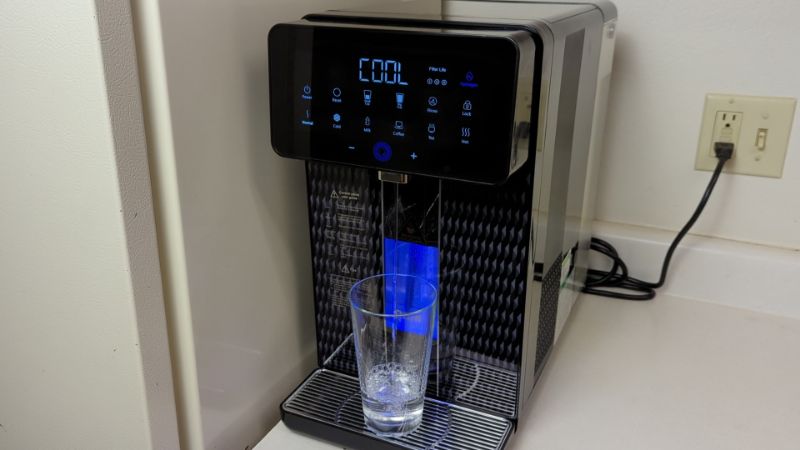
Ultrafiltration Filters
✅ Bromate reduction percentage: >90%
Ultrafiltration is similar to reverse osmosis, but UF pore sizes are slightly larger, so this treatment method doesn’t quite offer the fine filtration of RO and can’t remove all total dissolved solids.
An ultrafiltration system can remove around 90% of bromate or more from a drinking water supply. This system has a pore size of around 0.02 microns and removes the majority of chemicals, heavy metals, and disinfection byproducts in water, while retaining its minerals and salts.
You can find under-sink and countertop ultrafiltration systems for point-of-use water treatment.
Pros of ultrafiltration for bromate removal:
- It produces similar results to RO but is cheaper and produces no wastewater.
- It reduces a high percentage of bromate in tap water.
- It retains healthy minerals in water.
Cons of ultrafiltration for bromate removal:
- This water treatment method isn’t as widely available as RO, so your choices are limited.
- You don’t get the same level of purification from ultrafiltration.
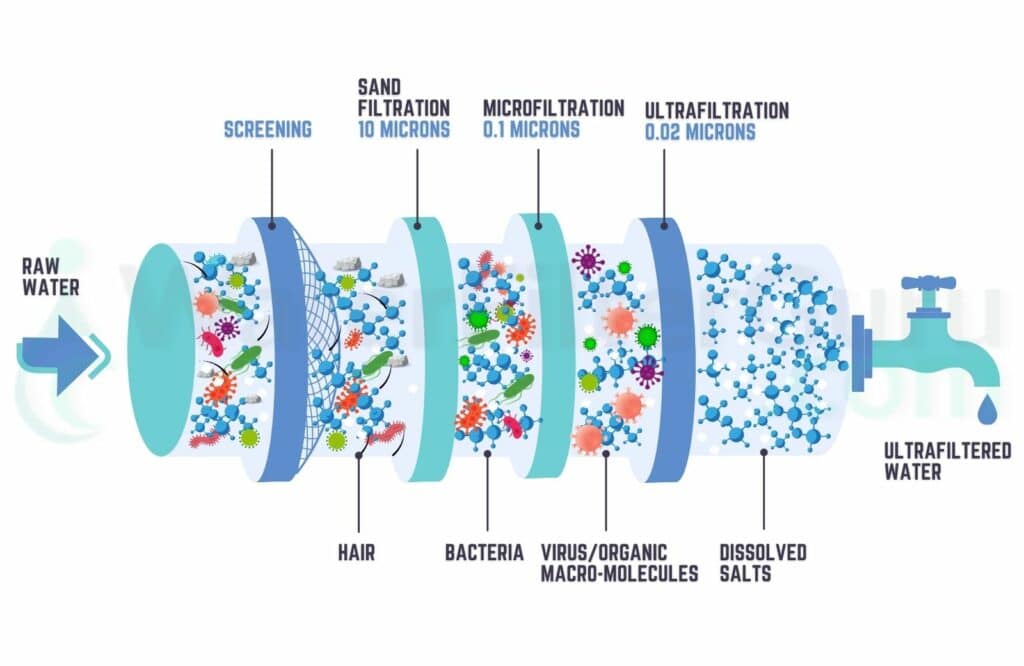
Anion Exchange/ Ion Exchange
✅ Bromate reduction percentage: Not clarified
Anion exchange, or ion exchange, is the final method that can be used to reduce bromate. This method is more commonly used in large-scale applications than in at-home systems.
An ion exchange membrane bioreactor can be used to effectively reduce bromate in water also containing nitrate. Studies have found ion exchange to be a highly efficient method of bromate removal from water streams.
Only a specialized anion exchange resin can be used to reduce bromate in water. The resin used in a water softener which is ion exchange resin won’t remove bromate.
Pros of anion exchange for bromate removal:
- Numerous studies have found that this method is the best way to reduce bromate in water that also contains nitrite.
- Anion exchange is an efficient method that doesn’t require much maintenance.
- It’s a good post-treatment method for large-scale applications (e.g. water treatment plants).
Cons of anion exchange for bromate removal:
- It’s not a popular method for at-home use.
- The estimated percentage of bromate reduction hasn’t been clarified.
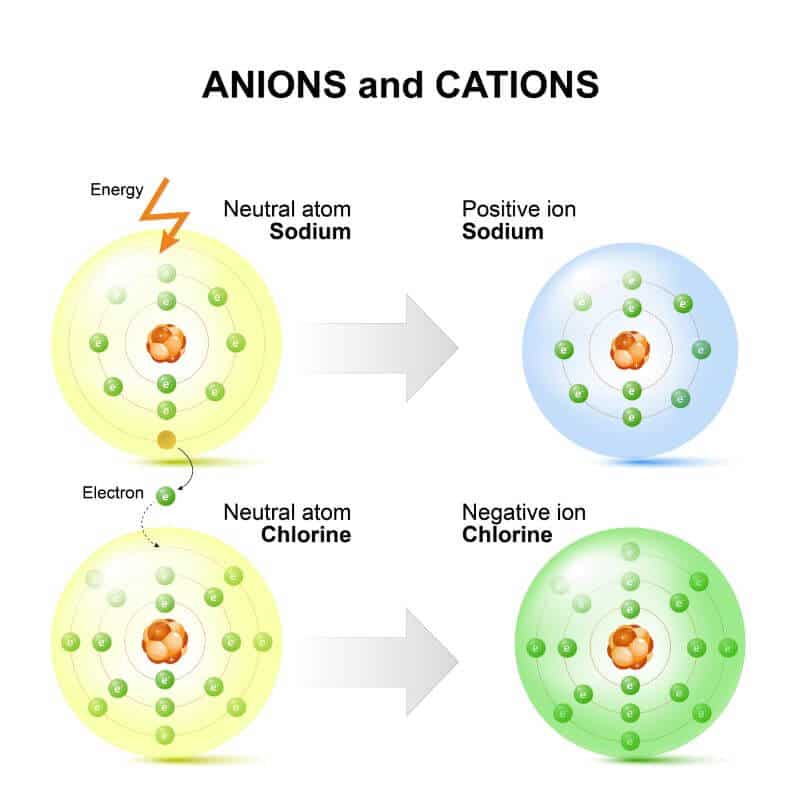
⚗️ Does Boiling Water Remove Bromate?
No, boiling water doesn’t remove bromate from water because bromate is a stable contaminant that doesn’t volatilize or dissipate into the air when water temperature is increased.
That means you shouldn’t try to remove bromate from your water by boiling it. The only likely outcome is that you’ll have a reduced amount of water (because some of the water will evaporate when it’s boiled) and the same amount of bromate.
🥇 Which Water Filters Are Best For Bromate Removal?
The best water filter for reducing bromate in your drinking water depends on your own personal needs, preferences, and budget.
If your budget is tight and you’re mainly focused on reducing bromate, go for a point-of-use GAC filter. This filter type is cheap and easy to come by. You can spend less than $100 on a GAC filter that effectively reduces bromate in your water.
If your budget is more flexible and you want to reduce other contaminants, too, we recommend reverse osmosis or ultrafiltration. RO systems offer the most effective purification method, so consider this treatment method if you want to make your water as clean and pure as possible.
Regardless of the filter type you prefer, only buy a product that’s sold by a reputable manufacturer, and read customer reviews carefully before you spend your money.
